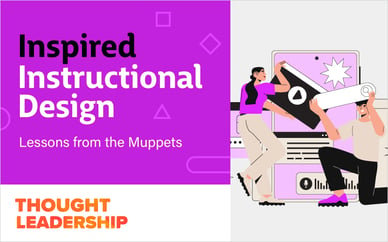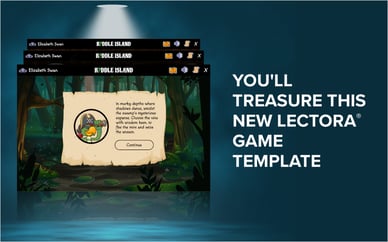
One of the keys to the successful design of online training is to make sure that the learners not only understand what’s being presented to them, but also that they can retain and transfer that information to the real world. Cognitive load theory is a theory our instructional designers always keep in mind when designing an online learning experience, because it takes into account humans’ limited capacity to absorb information.
Cognitive Load Theory (CLT) is a key learning theory to know.
CLT was developed to help educators gain an understanding of how a learner’s cognitive load (produced by learning tasks) can impede their ability to process new information and to create long-term memories.
Cognitive load may take one of three forms. It may be intrinsic, extraneous or germane.
Intrinsic Cognitive Load
Demand made of a learner by the intrinsic quality of information they are learning.
Extraneous Cognitive Load
Results from demands imposed on learners by the facilitator, or by the instructions that they are asked to follow.
Germane Cognitive Load
Occurs as schemas are constructed. This assists in learning new skills and other information.
Schemas relate to the generic knowledge that learners use to form mental representations. Learners can memorize and use a schema without even realizing they’re doing it. Social schemas for example, include general knowledge about expected behavior in specific social situations, like a job interview or a wedding.

Magic Number 7
The CLT holds that working memory can hold up to 7 (plus or minus 2) items for retrieval. If you’re trying to teach your learners more than that all at once, they’re likely not going to remember it. Which means, you need to be aware of your content and consider reducing the cognitive load in spots.
How to Reduce Cognitive Load in Training
- Break content into smaller segments. When content is too lengthy or the pace is too fast, learners be able to process the information. Breaking complex information into smaller chunks not only facilitates learning by allowing the learner to control the speed of the learning, it also provides them with more opportunities to process information more effectively.
- Remove non-essential content. Graphics can—and often do enhance learning experiences—but when they are not relevant, or there are too many of them, they can also distract and frustrate learners.
- Place words as close as possible to the corresponding graphics. The farther away text is from the corresponding graphic, the more learners are forced to scan the screen to make sense of what they are seeing, which means additional processing time.
- Present information via multiple channels (such as via text and audio) in a way that is targeted at improving processing capacity.
- Don’t narrate word for word! This is a big one and one that we see organizations doing often. The issue is that they’re failing to target both channels, and failing to spread the load, which increases redundancy as learners learn the information twice.
In the webinar, Brandie showed examples of learning content that features these tips. She also briefly covers a few other learning theories.
Watch the recording now for more info on learning theories:
Download Brandie's presentation slides here.
Want to learn more about how our instructional designers and eLearning developers can help you create amazing eLearning? Contact eLearning Brothers for a free consultation.








